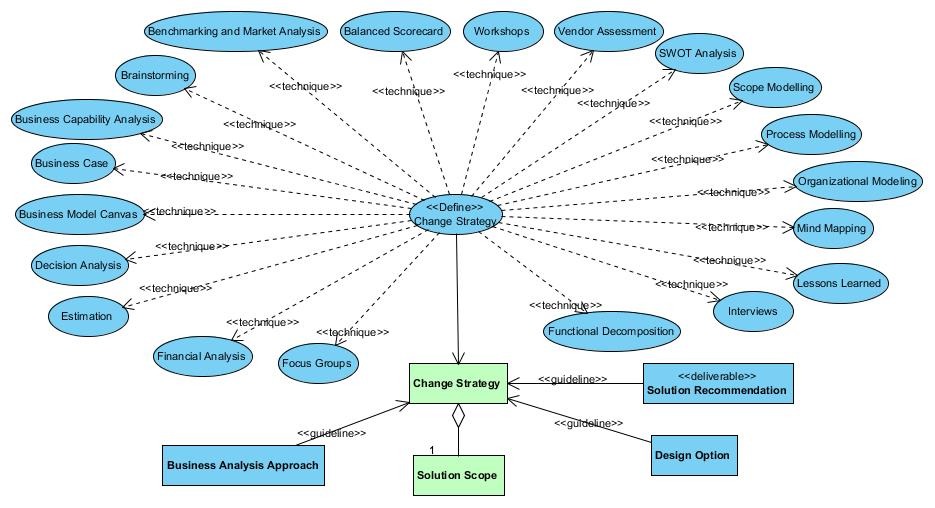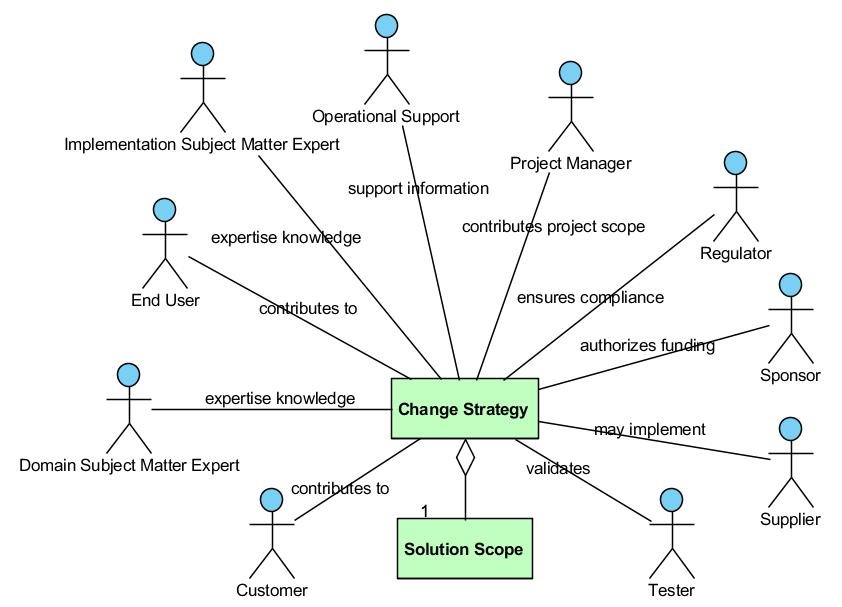Define Change Strategy
The purpose is to assess and recommend an approach to achieve the future state.
Guidelines/Tools and Techniques
The guidelines/tools and techniques used to define a change strategy.


Define change Strategy – Uses Focus Groups, Financial Analysis, Estimation, Decision Analysis, Business Model Canvases, Business Cases, Business Capability Analysis, Brainstorming, Benchmarking and Market Analysis, Balanced Scorecards, Workshops, Vendor Assessments, SWOT Analysis, Scope Modeling, Process Modeling, Organizational Modeling, Mind Mapping, Lessons Learned, Interviews and Functional Decomposition as techniques to define a change strategy and solution scope.
The Change Strategy – Uses the Business Analysis Approach, Solution Recommendation and Design Options as guidelines.
The relationships between these guidelines, tools, techniques, the Change Strategy and Solution Scope are detailed in the BABOK under the Guidelines and Tools and Techniques sections of the Define Change Strategy task.
Workers
The people involved with defining the change strategy.


The relationships between these roles the Change Strategy and Solution Scope, are detailed in the BABOK under the Stakeholders section of Define Change Strategy task.
Customer - Contributes to the enterprise readiness assessment.
Domain Subject Matter Expert - Provides expertise in domain knowledge.
End User - Contributes to the enterprise readiness assessment.
Implementation Subject Matter Expert - Provides expertise in implementation knowledge.
Operational Support - Provides information about supporting the change.
Project Manager - Is responsible for ensuring the project scope.
Regulator - Identifies regulations that must be complied with.
Sponsor - Authorizes funding for the change.
Tester - Validates components of the change strategy.